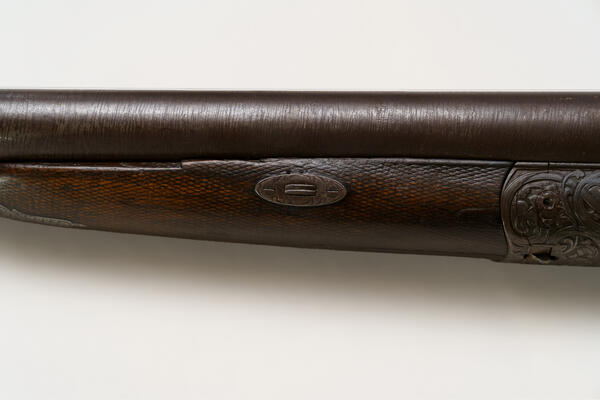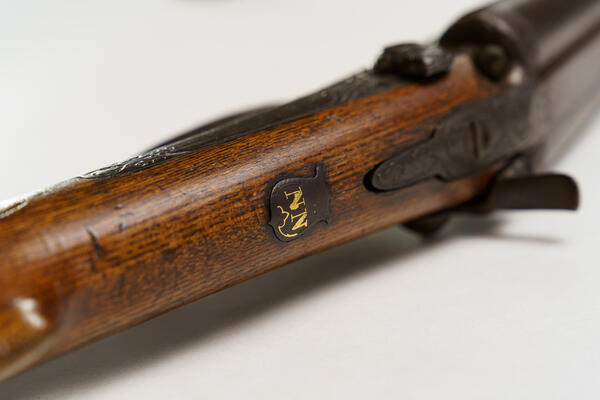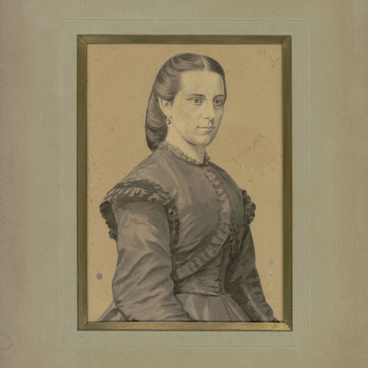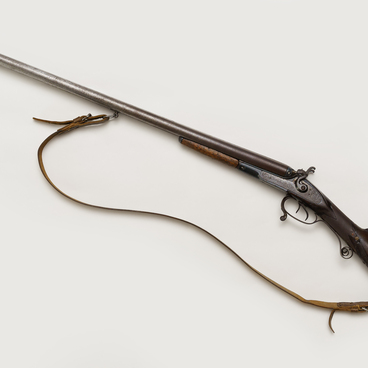The collection of the Museum-Reserve “Karabikha” includes a Charles William Lancaster lock double-barrel trigger-action centerfire shotgun. It was made in the workshop of the French gunsmith Louis Francois Devim. The gun belonged to the poet Nikolay Alexeyevich Nekrasov.
The barrels of the shotgun are mounted horizontally. The caliber of the left barrel is 19.3 millimeters, the right barrel is 19.2 millimeters, which is approximately equal to the modern 10- caliber. The wall thickness of the barrels at the muzzle is 1.3 millimeters. The length of the barrels is 60 centimeters. The shotgun has two triggers. The front one is for the right trigger, and the back one is for the left trigger. The strikers, i.e. the striking elements, are about 3 millimeters thick.
The gun is decorated with an engraving of a lion and a panther lying down and a boar on the run. The engraving with large and predatory animals indicated what kind of hunting the gun was intended for: this large-caliber, short-barreled, heavy but maneuverable weapon, or “Stutzer”, is suitable for hunting big animals. In the nineteenth century, the term “Stutzer” meant large-caliber shotguns with smooth barrels.
The stock, which is the wooden part of the shotgun, is made of thin-layer walnut. The stock shape is straight, “English”, with no cheek protrusion. In the stock neck, the wood fibers run strictly parallel to the neck axis, which ensures its increased strength under strong recoil from the shot.
The shotgun also has a thin leather belt with nickel-plated metal buckles.
Charles Lancaster lock shotguns were of high value in Russia.
Nikolay Alexeyevich Nekrasov asked the writer Ivan Sergeyevich Turgenev on April 5, 1861, “My dear Turgenev… Should you be in London, or is there a Lancaster or Purdey shotgun ready in Paris, loaded from the rear, under the new system. If there is, I would send you the money now, and you can let me know by telegraph. You can pay up to 500 silver rouble, with a large caliber (12th), heaviness, length of the stock — all this is the same as you want for yourself. These shotguns are provided with everything you need for making cartridges… I will be very much obliged.“
After the poet’s death, in 1878, the gun was bought by Mikhail Vladimirovich Andreyevsky, who was a huntsman at the Imperial Court and a master of hounds for the Romanov Grand Dukes. He was also the author of “The Hunting Notes”, a well-known book in his time.
The owners of the shotgun changed. In 1941, it was
purchased for 500 rubles from Ivan Alekseyevich Lizunov, a resident of
Yaroslavl, by the Yaroslavl Museum of Local Lore. In 1947 it was transferred
from there to the museum “Karabikha”.





